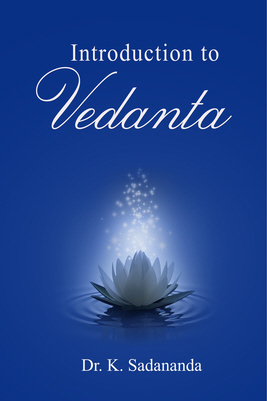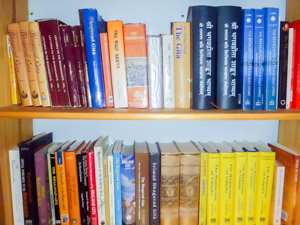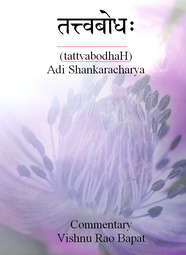 Introduction to Vedanta
Introduction to Vedanta
Bad news: Some readers may have noticed that the series ‘Introduction to Vedanta’ by Dr. K. Sadananda disappeared from my website a few days ago.
Good news: The series has now been published by Sethu R Rathinam in a quality, 218 page paperback and as an E-book on Amazon Kindle.
From my foreword to the book:
‘An Introduction to Vedanta’ was originally serialized on the Advaitin discussion group where it was justifiably well-received. As they say in the advertising media: ‘it does what it says on the box.’ It covers all of the material needed to introduce the subject to a new seeker, clarifying aspects that could otherwise prove difficult or even dampen enthusiasm. He never talks down to his listeners but speaks directly to them using everyday examples that resonate immediately. No doubt he benefits from having been taught directly by Swami Chinmayananda and more recently by many other teachers including Swami Tejomayananda and Swami Paramarthananda, but his scientific background also brings naturally clear reasoning ability to his analysis of the subject with the result that he seems able to explain the most difficult topics.
Anyone looking for an overview of the essential teaching of Advaita could not do better than to read this Introduction.
And I consider myself fully qualified to recommend the book since I editied it myself!
The paperback or Ebook may be purchased now from Amazon:
Buy from Amazon US (book) ….. $10.00 Buy from Amazon US (Kindle) ….. $5.00
Buy from Amazon UK (book) ….. £8.00 Buy from Amazon UK (Kindle) ….. £3.82


 Many books (transcription of talks) by Swami Paramarthananda are available at www.arshaavinash.in. This includes a number of Upanishads (Mundaka, Mandukya, Brihadaranyaka, Kena and more), Bhagavad Gita, Brahmasutra with Shankara bhAshya and many other key scriptures such as upadesha sAhasrI, vivekachUDAmaNi, dRRig dRRiShya viveka etc. These cannot be recommended too highly.There are also books on Sanskrit grammar and a biography of Pujya Swami Dayananda.
Many books (transcription of talks) by Swami Paramarthananda are available at www.arshaavinash.in. This includes a number of Upanishads (Mundaka, Mandukya, Brihadaranyaka, Kena and more), Bhagavad Gita, Brahmasutra with Shankara bhAshya and many other key scriptures such as upadesha sAhasrI, vivekachUDAmaNi, dRRig dRRiShya viveka etc. These cannot be recommended too highly.There are also books on Sanskrit grammar and a biography of Pujya Swami Dayananda.